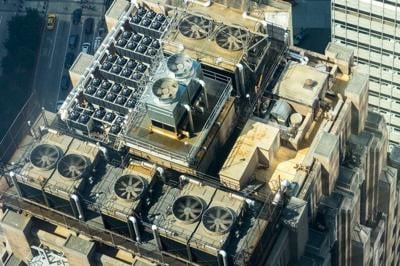
It's a common misconception that the only time HVAC is important in architecture is when it turns on and cools off spaces. This couldn't be farther from the truth. One of the most overlooked aspects of designing with HVAC in mind is comfort zones. When designing your space, it's essential to consider what type of temperatures people want to spend their time in.
The article discusses how understanding these factors can help make a room more comfortable for occupants and lead to higher energy efficiency ratings.
1. The HVAC unit is what regulates the temperature of your home.
One of the primary roles of the HVAC unit is to regulate the temperature of your home. The heating and cooling system in your housework and other devices, like furnaces or fireplaces, generate heat through a combustion process.
For the unit to perform efficiently, a professional AC repair company should be installed and maintained. Also, AC replacement should be done by an expert. Replacing a faulty unit is not easy and should be left to professionals like Hooley Heating and Air the Best Furnace Services in Fort Collins, CO.
2. Conserves Energy
If you are looking to save energy, HVAC systems are a great way to do so. Since most power is used for heating and cooling, HVAC can be highly beneficial in these areas; therefore, it's crucial to understand how significant your impact will be on the building you're inhabiting.
Not only does an efficient system save money by using less energy, but it also saves money upfront when installation costs are taken into consideration. The upfront cost may seem high at first glance, but over time, this investment pays off tenfold as years go by with no additional maintenance required because of lack of use or wear and tear from too much activity.
3. It also keeps the humidity levels in check.
The humidity levels in the air are critical for a comfortable indoors. If you have high humidity levels, it will contribute to making an uncomfortable atmosphere in your room. It is essential to living with children or seniors because they can quickly get sick due to environmental conditions.
The indoor quality of any building cannot be separated from external factors such as sunlight, wind circulation, etc. Still, HVAC systems play a very crucial role in regulating this environment within your rooms. Not only does it keep track of temperature at all times, but it also ensures that there is enough fresh oxygen present inside the space, which keeps everyone healthy and happy throughout their stay here!
4. An HVAC system can be used for heating, cooling, and dehumidifying.
Another reason to use an HVAC system with your new construction is to take advantage of the available automated controls. Many sensors and controllers can be placed around a home or building to monitor certain aspects, like humidity levels, sunlight exposure, exterior temperature changes, etc., and adjust the airflow accordingly. The automation features will ensure your air stays at its most comfortable level without you having to lift a finger.
5. Heat pumps warm up a room or house by adding heat to it.
In the cold months, this can make it much more comfortable to be indoors.
Alternatively, a heat pump can move the excess warmth from inside a house or building and release it outside. This is called 'reverse cycle' or 'heat recovery.' In both cases, the energy required for heating comes from the environment (solar radiation in most climates). Heat pumps are used as an alternative to using electricity.
6. Improves the Indoor Air Quality
Your indoor air quality is what you breathe in your home or workspace. Poor indoor air quality has been linked to health problems, such as allergies and asthma. While poor ventilation is a factor in bad indoor air quality, it's not the only issue contributing to this problem.
HVAC systems have come a long way over the past couple of decades, but many people still do not understand how they work. Before HVAC systems were installed in homes and buildings, architects had no choice but to build with materials that didn't allow for healthy airflow throughout structures. If an architect wanted their building design to be functional, built-in fans would help circulate fresh air through rooms, while windows opened from top-to-bottom on each floor helped pull in outdoor air.
HVAC systems are a crucial component of any building, especially for those in the architectural field. Architects need to design buildings that function well and look aesthetically pleasing and consider how their designs will impact HVAC systems years from now. Improperly designing an HVAC system can result in increased costs as problems arise over time or create uncomfortable conditions within a space, such as excessive noise levels or poor air quality, which negatively impact health and productivity. This blog post mentions everything an architect needs to know about the importance of HVAC in architecture, including precisely what role it plays.


(1) comment
The thoughts on your article about Importance of hvac in architecture is very useful.
(Edited by staff.)Welcome to the discussion.
Log In
Keep it Clean. Please avoid obscene, vulgar, lewd, racist or sexually-oriented language.
PLEASE TURN OFF YOUR CAPS LOCK.
Don't Threaten. Threats of harming another person will not be tolerated.
Be Truthful. Don't knowingly lie about anyone or anything.
Be Nice. No racism, sexism or any sort of -ism that is degrading to another person.
Be Proactive. Use the 'Report' link on each comment to let us know of abusive posts.
Share with Us. We'd love to hear eyewitness accounts, the history behind an article.